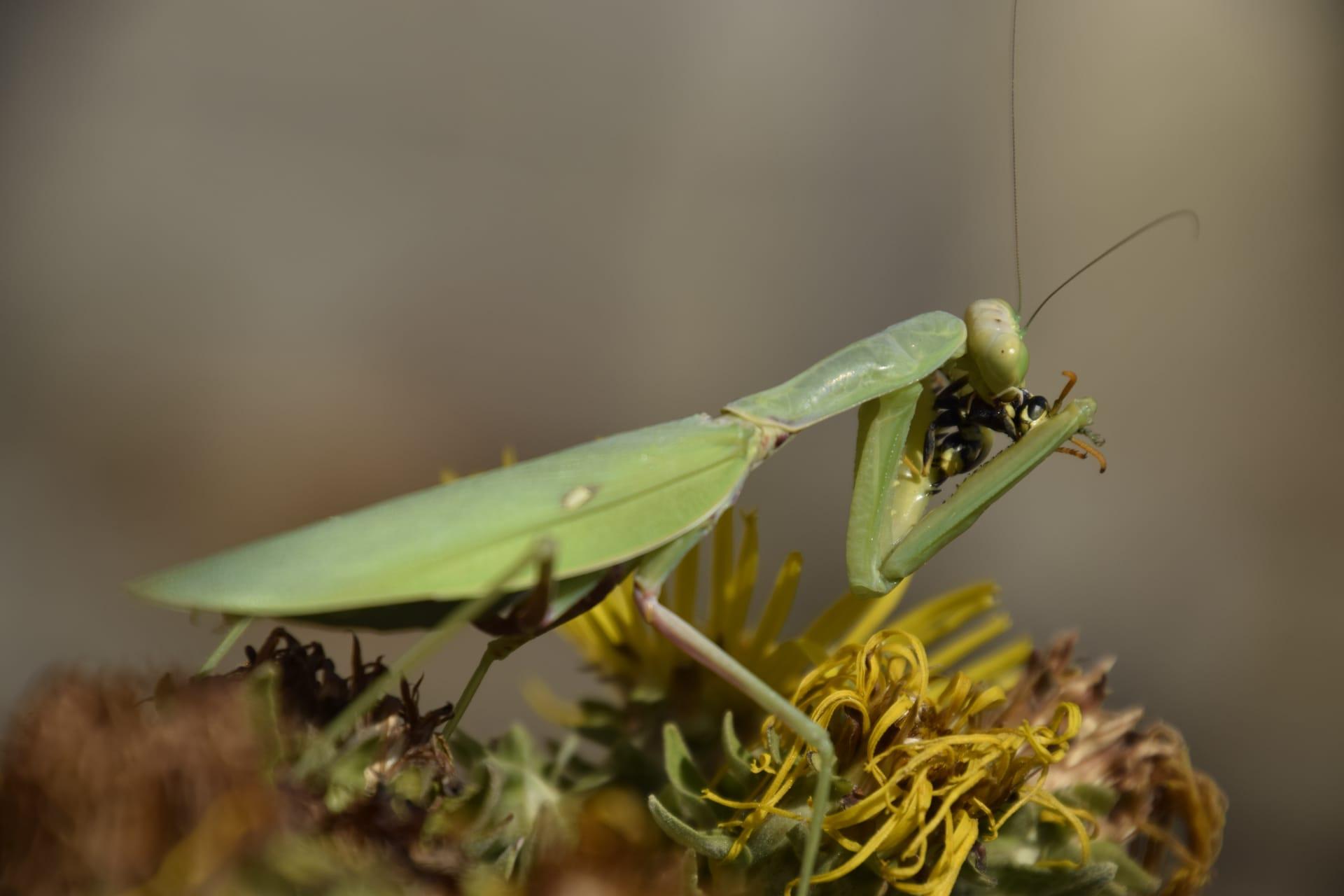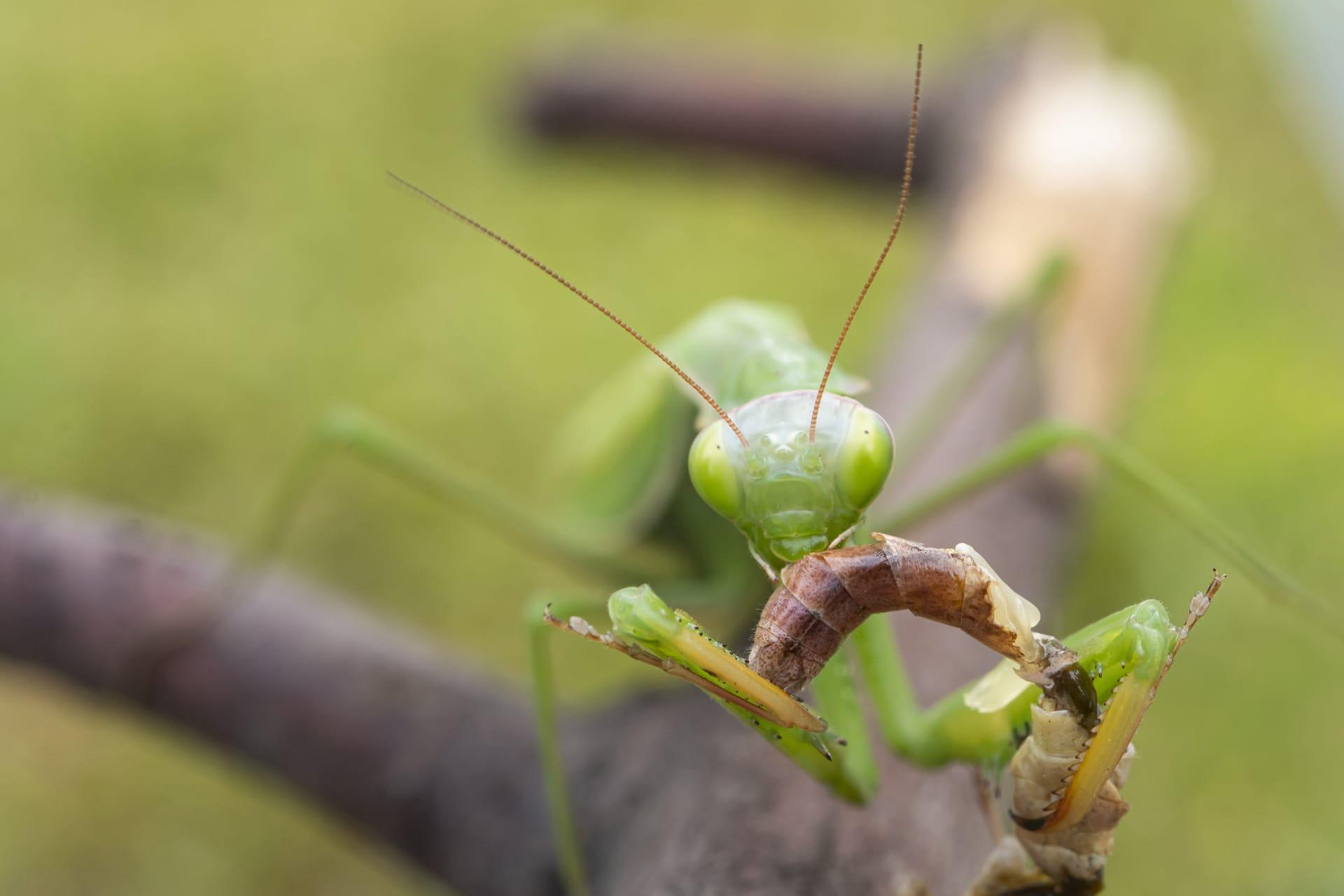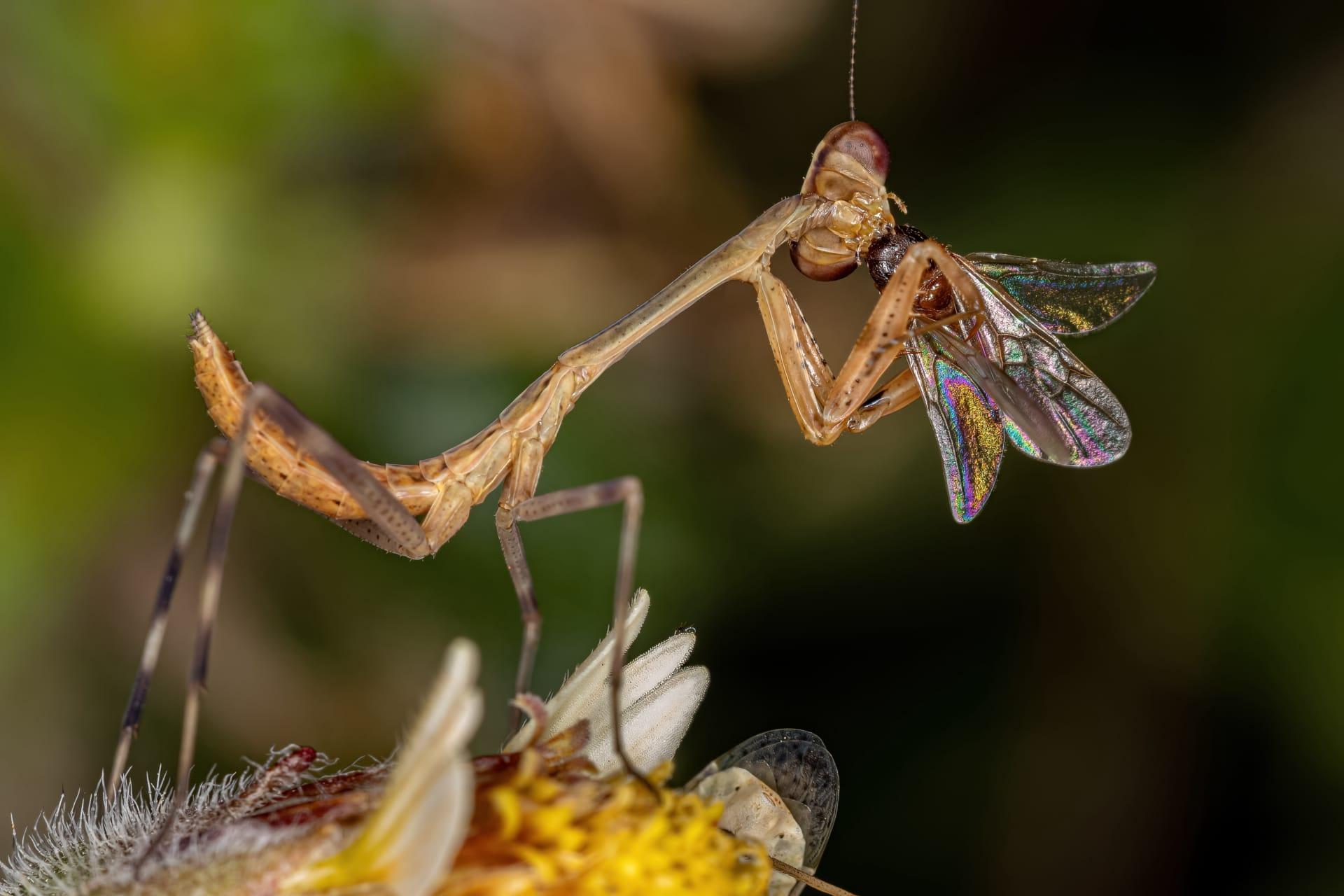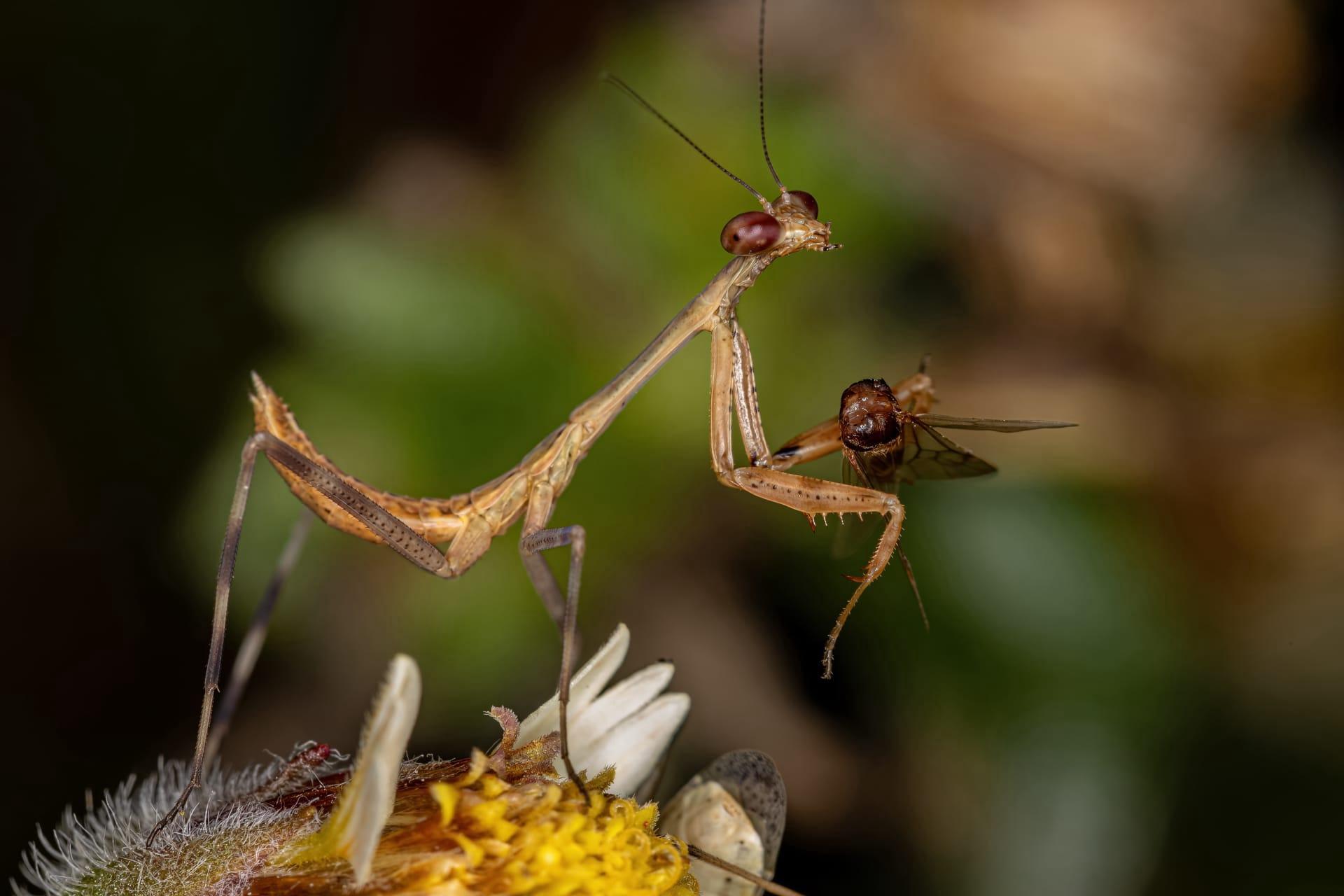Mantid Characteristics
- Home /
- Mini Encyclopedia /
- Animal /
- Mantid Characteristics
1
The Mantid, a fascinating insect species, showcases a unique blend of physical characteristics. Typically, an adult mantid measures between 2 to 5 inches in length. Their life expectancy, though brief, is intriguing. On average, mantids live for about 12 months, with some species surviving slightly longer under optimal conditions. This lifespan is divided into distinct stages, from a vulnerable nymph to a formidable adult.
Among the mantid's most remarkable features is its raptorial forelegs. These specialized limbs, which are bent and held together at an angle that resembles a prayer position, are the mantid's primary tool for hunting and defense. These legs are equipped with spikes, enabling the mantid to swiftly snatch and grip its prey with precision. This mechanism is not only effective for capturing insects but also occasionally allows larger mantids to take on vertebrates such as small birds or lizards.

2
Question: What do mantids eat and how do they catch their prey?
Answer: Mantids are primarily carnivorous and prey on a wide range of insects like flies, bees, and even other mantids. They employ a 'sit-and-wait' strategy, blending into their surroundings until unsuspecting prey comes within reach. Once in range, they strike with lightning speed. Their raptorial forelegs, equipped with sharp spines, seize the prey in a fraction of a second. This method of hunting showcases the mantid's predatory efficiency and adaptability in diverse environments.

3
Mantids exhibit remarkable mobility traits. They are predominantly ambush predators, relying on stealth and their ability to blend into surroundings. However, when required, they can move with surprising agility. Their swift, side-to-side movements make them elusive targets for predators. Additionally, mantids are capable of flight, with longer wings in males facilitating better flying ability compared to the shorter-winged females.
In terms of feeding habits, mantids are known for their voracious appetite. They consume a variety of insects and are not averse to engaging in cannibalism, especially during mating. This feeding behavior plays a crucial role in controlling the population of other insects, making mantids valuable in maintaining ecological balance.

4
The habitat of mantids is diverse, ranging from tropical rainforests to temperate grasslands. They thrive in environments where they can effectively camouflage themselves, such as among green foliage or on tree bark. This adaptive ability to blend into their surroundings is crucial for both hunting and avoiding predators.
Reproduction in mantids is as intriguing as their hunting strategies. After mating, the female lays eggs in a foam-like substance that hardens to protect the eggs through winter. This egg case, or ootheca, can contain hundreds of eggs. Interestingly, sexual cannibalism is common in some mantid species, where the female consumes the male after or during mating, providing nutrients essential for the development of her eggs.

5
Book: "The World of Mantids" by Dr. James H. Maxwell, published in the USA, 1998. This book delves into the captivating world of mantids, covering their biology, behavior, and role in various ecosystems. Dr. Maxwell, a renowned entomologist, provides an accessible and detailed exploration of these insects, highlighting their unique adaptations and survival strategies.
Book: "Masters of Camouflage: The Mantid's Tale" by Sarah Jennings, published in the UK, 2003. Jennings' book offers a comprehensive look into the life of mantids, focusing on their extraordinary ability to blend into their surroundings. Through vivid descriptions and case studies, the book presents a thorough understanding of mantid behavior, physiology, and their significance in the natural world.